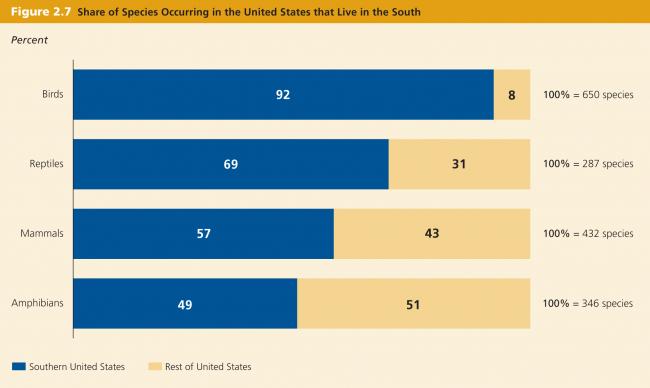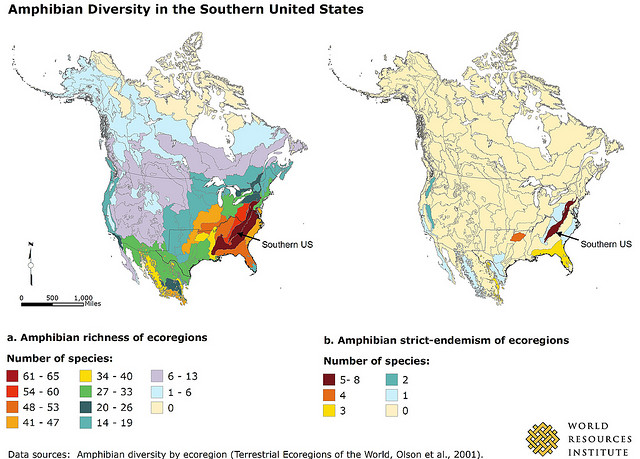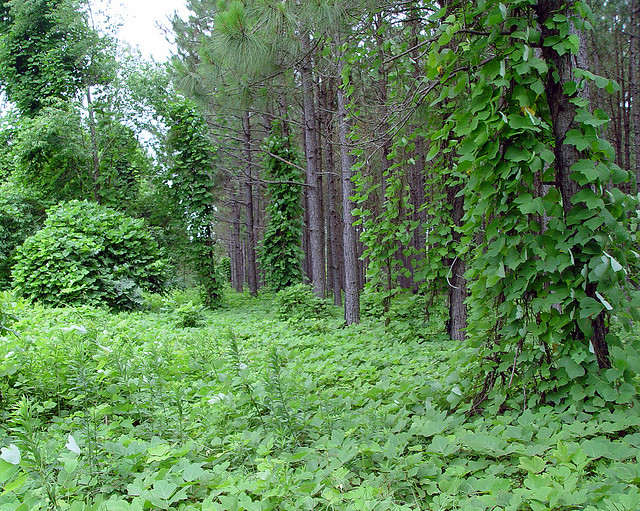COP-10 Provides Opportunity to Recognize Biodiversity at Home
By Logan Yonavjak and Nick Price
To celebrate biodiversity, look no further than the forests of the Southern United States.
From October 18th to 29th, 2010, heads of state and government officials from the United Nations’ 192-member states will hold the 10th international meeting devoted to the promotion and protection of global biodiversity. Their aim at this tenth meeting of the Conference of the Parties (COP-10) is to adopt a new strategic plan to stop worldwide biodiversity loss over the next ten years, with targets for 2020 and a new biodiversity vision for 2050. This meeting is in conjunction with the first ever International Year of Biodiversity, as declared by the United Nations, where the world is invited to take action to safeguard the variety of life on earth.
Many people cite the Amazon rainforest or the forests of Indonesia as centers of biodiversity, boasting colorful, endemic plants and animals, and what seems like a new species discovery every day. Yet the United States is also a center of biodiversity, especially the forests of the South.
Southern forests, stretching from Texas to Virginia and from Kentucky to Florida, are among the most biologically diverse temperate forests in the world, supporting 3,000 species of plants, 595 species of birds, and 246 species of mammals. However, without more effective management and increased habitat protection, many species within these forests are under threat and at risk of extinction.
Biodiversity and Healthy Forests
Forests are the dominant natural ecosystem in the South. They cover approximately 214 million acres, comprising 40 percent of the South’s land area and 29 percent of total forestland in the United States.
Forests provide habitat for thousands of different forest-adapted and forest-dependent species. In fact, within North America, southern U.S. forests are centers of biodiversity not only for trees, but for amphibians and reptiles as well. For these classes, the South hosts a high concentration of “species richness” – the number of species in a given area—and “species endemism” — the number of unique species found in a specific area and nowhere else. These species are critical to maintaining the health and resilience of these forest ecosystems.
The Biodiversity of Southern Forests Benefits People by Supporting Ecosystem Services
“Biodiversity has been the foundation for the world’s economy since the origin of human civilization,” says Tim Killeen of Conservation International. The southern United States is no exception. Biodiversity in the South underpins a critical supply of ecosystem services — the benefits that people derive from nature — which people across the United States and around the world depend upon. Examples of these ecosystem services include:
- Lumber and plywood for construction, veneer for furniture, pulpwood for paper, and biomass fuel for industry and home heating
- Water purification, erosion protection, and climate regulation
- Food, medicinal plants, and other essentials harvested from forests
- Places for people to hike, camp, fish, hunt, and experience natural beauty
Threats to Biodiversity
While the southern United States currently supports an impressive number of species, pressures from both natural and human sources threaten to reduce biodiversity in the region. Some of the greatest threats to biodiversity in the southern United States include: forest conversion to development, climate change, invasive species, and unsustainable forest management.
Forest Conversion
Of the original 350 million acres of southern forests that blanketed the region before European settlement, 40 percent has already been converted for agriculture or lost to suburbanization or surface mining. Suburbanization alone will result in more than 12 million acres of forest being cleared or impacted between 1992 and 2020, with another 19 million acres between 2020 and 2040. This development will result in a substantial amount of permanent forest conversion and fragmentation, which will negatively affect biodiversity in the region.
Climate Change
Many forest species have adapted to specific climatic conditions, and as Earth’s climate changes during the 21st century and beyond, southern forest species may be forced to change as well. Although implications for specific locations are difficult to predict, climate change may have a variety of impacts on southern forests, including:
- The natural range of certain plant and animal species may shift. For instance, species conditioned to cooler climates, such as spruces, may retreat northward and/or to higher altitudes. As species ranges shift, parks and protected areas could be less able to serve as refuges for some types of plant and animals.
- Some coastal forests, such as the low-lying cypress swamps in Louisiana, may decline in extent and health due to an increase in inundation and saltwater intrusion as sea levels rise.
- Forest species composition may change if drought-sensitive species decline in number or become more susceptible to pests and pathogens.
Invasive Species
Southern forests are under threat from biological invasions of alien species. Over the past hundred years, global economic growth has opened new and varied pathways for invasive species to establish and spread in new ecosystems. These biological invasions can result in significant economic losses. According to one estimate, overall damage and control costs associated with invasive species in the United States are estimated at more than U.S. $138 billion annually. Biological invasions by alien species also decrease biological diversity and inhibit critical ecosystem functioning. For example, in the early 20th century, chestnut blight decimated the American chestnut population, bringing the species, which at one time made up one-fourth of the eastern U.S. hardwood tree population, to the brink of extinction.
Nonnative, invasive plants also threaten native species in the South. For instance, kudzu, “the vine that ate the South,” was introduced to provide attractive ground cover and control rampant soil erosion caused by poor farming and forestry practices. Kudzu grows at a prodigious rate and can climb over trees, smothering all vegetation below its thick canopy of foliage. Like most invasive plants, it is very difficult and expensive to remove once established.
Unsustainable Forest Management Practices
Another serious threat to biodiversity can come from unsustainable management of southern forests. To the degree that harmful forestry techniques, such as short rotation clear-cutting, mono-culture tree plantations and the overuse of chemical herbicides, encroach on the region’s natural forests, forest composition could change drastically, which could negatively affect biodiversity as well.
Protecting Biodiversity in the South Going Forward
At the COP-10 conference, government leaders from around the world will set targets for biodiversity protection over the coming decades. As part of this effort, citizens and government officials in the United States ought to recognize that industrialized communities are not immune to the threats of biodiversity loss and associated impacts on ecosystem services. The forest ecosystems of the U.S. South are a center of biodiversity. Therefore, enhancing the protection and sustainable management of these forests can help ensure the security and restoration of the region’s biodiversity, as well as the suite of ecosystem services that it supports.
The World Resources Institute (WRI) is working to help ensure southern forests and their biodiversity are protected for future generations. In addition to WRI’s newly released web-based mapping tool that visually demonstrates the major trends and threats to southern U.S. forests, WRI is currently analyzing a number of financial mechanisms to incentivize greater private forestland conservation and sustainable management so that it becomes more economically feasible to retain forestland throughout the region. For more information, visit www.SeeSouthernForests.org.
| In an effort to showcase these values and raise awareness about the major threats and trends in southern U.S. forests, the World Resources Institute (WRI) has created a unique, user-friendly website, www.SeeSouthernForests.org, that uses historic and current satellite images, photographs, data, history and news to illustrate themes such as suburbanization, forest cover and composition, drought conditions, tree species, and recent fires. This user-friendly website is not only about raising awareness, but also catalyzing greater sustainable stewardship of southern U.S. forests. |





